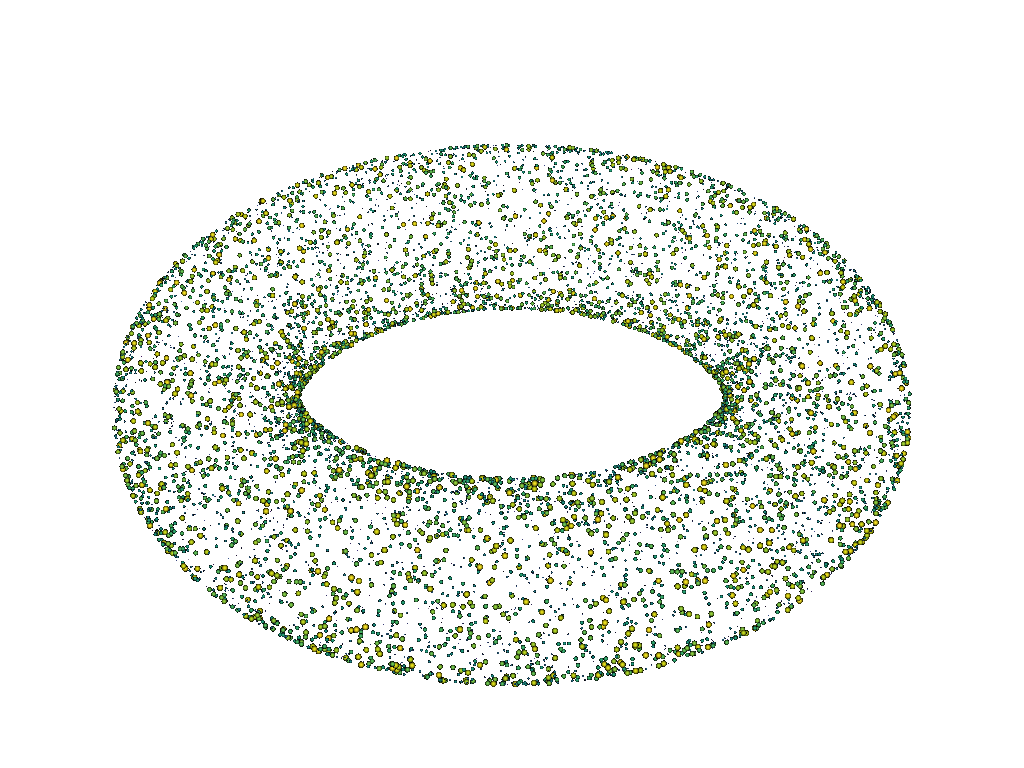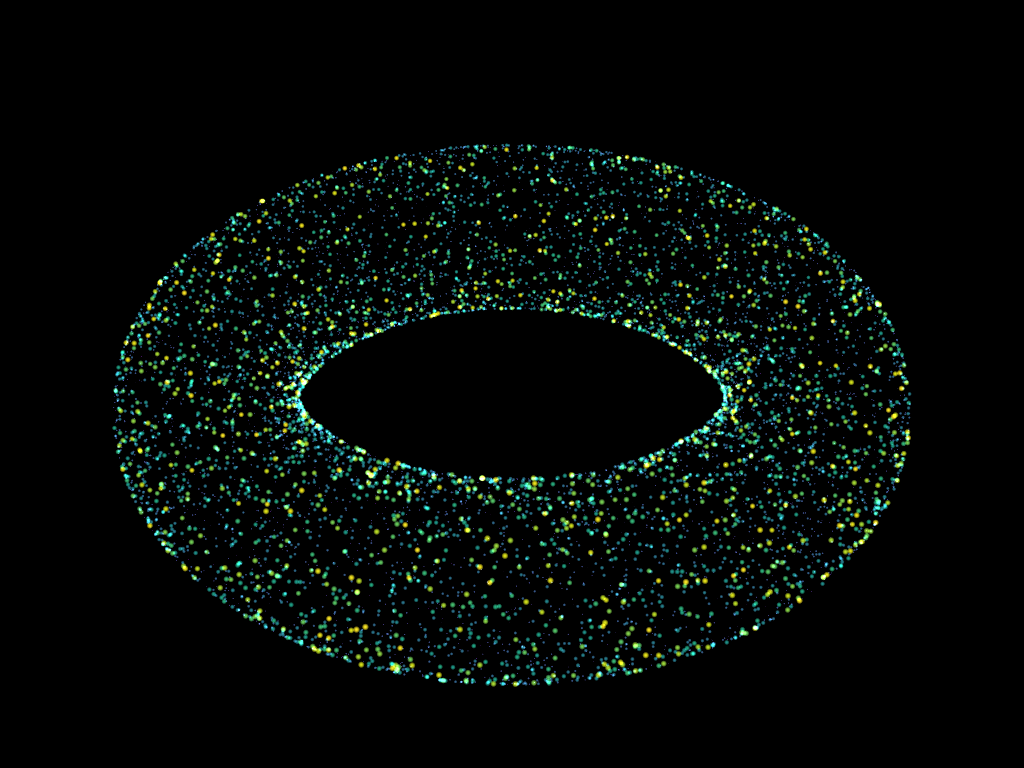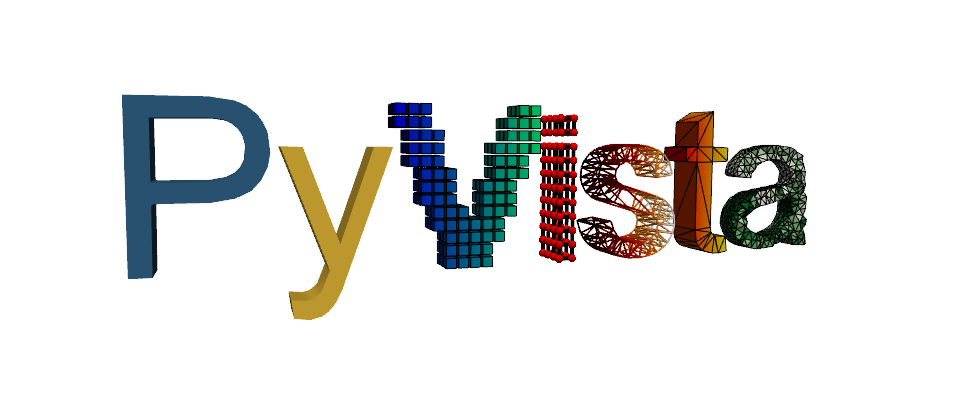Note
Go to the end to download the full example code.
Scaled Gaussian Points#
This example demonstrates how to plot spheres using the 'points_gaussian'
style and scale them by a dynamic radius.
from __future__ import annotations
import numpy as np
import pyvista as pv
First, generate the sphere positions and radii randomly on the edge of a torus.
# Seed the rng for reproducibility
rng = np.random.default_rng(seed=0)
N_SPHERES = 10_000
theta = rng.uniform(0, 2 * np.pi, N_SPHERES)
phi = rng.uniform(0, 2 * np.pi, N_SPHERES)
torus_radius = 1
tube_radius = 0.3
radius = torus_radius + tube_radius * np.cos(phi)
rad = rng.random(N_SPHERES) * 0.01
pos = np.zeros((N_SPHERES, 3))
pos[:, 0] = radius * np.cos(theta)
pos[:, 1] = radius * np.sin(theta)
pos[:, 2] = tube_radius * np.sin(phi)
Next, create a PolyData object and add the sphere positions and radii as data arrays.
Finally, plot the spheres using the points_gaussian style and scale them
by radius.
pl = pv.Plotter()
actor = pl.add_mesh(
pdata,
style='points_gaussian',
emissive=False,
render_points_as_spheres=True,
show_scalar_bar=False,
)
actor.mapper.scale_array = 'radius'
pl.camera.zoom(1.5)
pl.show()

Show the same plot with emissive=True.
pl = pv.Plotter()
pl.background_color = 'k'
actor = pl.add_mesh(
pdata,
style='points_gaussian',
emissive=True,
render_points_as_spheres=True,
show_scalar_bar=False,
)
actor.mapper.scale_array = 'radius'
pl.camera.zoom(1.5)
pl.show()

Total running time of the script: (0 minutes 0.563 seconds)
